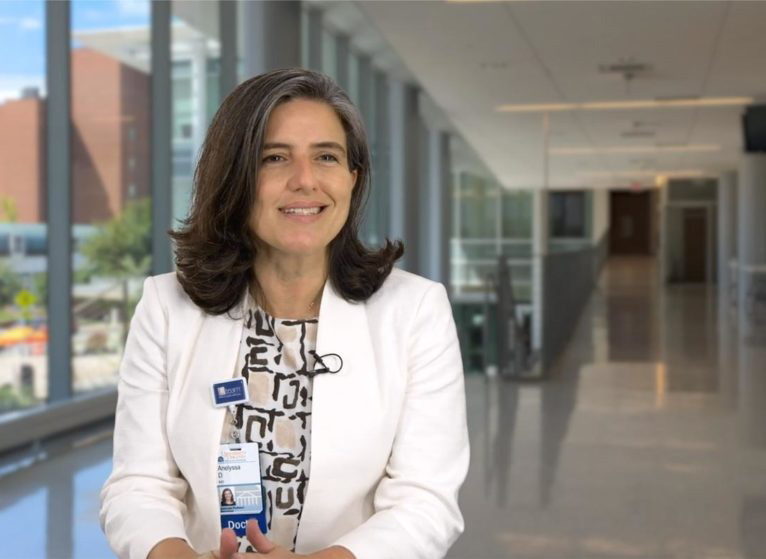University of Virginia biology professor George Bloom is receiving revived interest lately in an old paper. Eleven years ago, he was part of a research team that illuminated the Alzheimer’s brain target that a new and exciting – but not yet approved – drug called Donanemab now acts upon.
Compared to placebo, Donanemab slowed the clinical decline of Alzheimer’s by 35% and resulted in 40% less decline in “the ability to perform activities of daily living,” according to a press announcement.
What’s more, nearly half of the experimental group was reported to have had no clinical decline after a year.
The drug has raised hope for individuals and families who have loved ones in early stages of the disease or who are at risk for Alzheimer’s. Optimism pushed Ely Lilly and Co. stock to an all-time high.
To Bloom, the target seems right. And he is rooting for the drug in whatever ways it can help people. But, he said, “Alzheimer’s defects at the cellular and molecular levels start appearing 20 years before the symptoms of the disease are obvious. By then, you have massive brain damage.”

George Bloom is a biologist and UVA Health researcher who has studied the target Donanemab acts upon. (UVA Health photo)
A drug administered at that stage, Bloom said, is like “going deer hunting, and you pull the trigger after the deer has left the scene.”
Bloom and his neurologist peer at UVA Health, Dr. Anelyssa D’Abreu, talked to UVA Today about Donanemab and the nature of Alzheimer’s, as well as about why looking at an increasingly younger target audience may be worthwhile.
Donanemab: Where’s the Data?
“So far we only have the press release. The data has not been published,” said D’Abreu, an assistant professor of neurology in the School of Medicine who specializes in geriatrics. “So, it is hard to completely understand all the findings.”
Donanemab isn’t a pill, but rather a monoclonal antibody, which is a targeted therapy derived from one parent cell. You may have heard of monoclonal antibodies in regard to cancer treatment or as a COVID-19 therapy. The therapy is delivered as a blood infusion.
In the case of Donanemab, the target is the protein that makes up amyloid plaques. These misfolded proteins bunch up between nerve cells, disrupting cognition, which eventually leads to the death of neurons in the brain.
“The exciting result is that the drug slowed down the progression of the disease when compared to placebo,” D’Abreu said. “The concerning issue is the side-effect profile.”
Swelling of the brain occurred in about a fourth of the experimental group, with about a fourth of those patients experiencing symptoms. Two patients died from abnormalities attributable to the drug. A third died after having previously experienced brain abnormalities.
That doesn’t mean the drug won’t be approved, however. “It has a similar mechanism of action of Aducanumab and Lecanemab, two other Alzheimer’s drugs that have received accelerated approval by the FDA,” the doctor said.

Dr. Anelyssa D’Abreu is a UVA Health geriatric neurologist and an assistant professor in the School of Medicine. She is optimistic about the drug, though like many others, would like to see more data. (UVA Health photo)
So far, Lilly has held its data on Donanemab close to the vest, apparently for competitive reasons, the UVA experts said.
But D’Abreu and Bloom said the company will have to give the FDA more in order to receive approval, and the public will demand more information, in the interest of continuing the campaign against a ruthless disease.
Alzheimer’s Brains
The brains of Alzheimer’s patients are different than those of persons with other related diseases. The two physical characteristics that stand out, Bloom said, are plaques and tangles.
“Plaques are tightly packed bundles of fibers, mostly outside of the neurons themselves,” Bloom explained. “The tangles are also bundles of tightly packed filaments, but they’re neuronal.”
The new drug targets the plaques by attacking pyroglutamylated amyloid-beta, a short chain of amino acids that is “especially potent in getting plaques started,” he said. “If plaques are made with pyroglutamylated amyloid-beta, they’re a lot worse.”
The tangles, meanwhile, are made from a protein called tau, which increases with the ramp up of those amino acids.
“The thinking was if you go after pyroglutamylated amyloid-beta, outcomes for patients might be better,” Bloom said of the 2012 research he took part in, published in the journal Nature.
Matching the Drug to Patients
For those who end up taking Donanemab, which appears likely to receive approval, Bloom said, swelling and microbleeds in the brain will be part of the risk that patients must accept.
“All monoclonal antibodies have this problem,” he said. “It may just be the price you have to pay. Everything that’s good has a bad side.”
It should be noted that the people who took part in the Lilly tests were already in an early stage of Alzheimer’s or were known to have mild cognitive impairment that could lead to the disease. They opted into the trials, assuming the risk.
But what if you could know your risk decades earlier and take proactive measures while you’re relatively young and healthy?
“The real answer to Alzheimer’s disease,” Bloom said, “will be prevention: early diagnosis, identifying people at risk maybe 20, 25 years before symptoms arise, then delaying its onset and slowing progression.
“Maybe if a drug like Donanemab were provided to people much earlier after an early diagnosis, and then they remained on it a long time, maybe it would be much more effective.”
Younger Alzheimer’s Care
He used as an analogy the serum tests that predict people at risk of cardiovascular disease, which are sometimes followed by lifelong prescription of blood-thinning statins. “Alzheimer’s prevention might be a combination of a cocktail of drugs and lifestyle adjustments,” he said.
Brain imaging is already allowing for some early Alzheimer’s predictions, so the professor is optimistic.
One catch will be expense, though. The drug company probably wouldn’t want to extend its current research to younger patients over longer periods on its own dime.
“A longer trial would be very expensive,” Bloom said. “Though any company that stands to make money needs to put skin in the game, it’s going to take a consortium.”
In addition, there’s the cost of the actual therapy once it does reach market. Will it be only accessible to those wealthy enough to pay?
Finally, add one more possible issue: If Donanemab is approved for a wider set of recipients, patients may balk at the lifestyle change. Monthly or more frequent infusions of monoclonal antibodies for reasons other than dire, immediate need may be a hard sell, Bloom said.
Media Contact
Communications Manager School of Engineering and Applied Science
williamson@virginia.edu (434) 924-1321
Article Information
July 11, 2025






